Vietnam sojourn
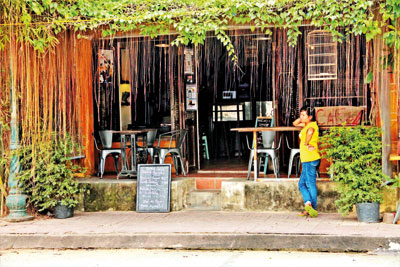
Waiting for guests to arrive
Recently, during a 10 day sojourn in Vietnam, I got to experience the South to the North of the country. The route was roughly as follows; Ho Chi Min, Mekong Delta, Danang, Hoi An, Hue, Hanoi and finally the iconic Halong Bay. Each place was different from the previous, yet curiously the same.
People were informal, as was the traffic – the most popular mode of transport was the bike. People wearing traditional garb and those wearing modern clothing went about their business with no second glance. But both proponents were equally practical when it came to shielding themselves from the sun: The conical straw hat was a prominent feature of their dress.
The Vietnamese people’s informality seemed the most obvious when it came to enjoying food. People congregate anywhere to eat. The pavement or even by the side of a main road was good enough. They would sit on the ground, or on the littlest stool. The range of food was extensive. There was noodles, rice, soup (pho) a plenty as well as a stuffed bun called Bánh mì, and plenty of barbecued meat. There was no discrimination here; the meat that was barbecued was equally diverse, but the most common was pork.
Two places stand out -Hoi An in the middle of the country, and Halong Bay in the north.
Hoi An was an important international trading port centuries ago. Today part of the old city is preserved as a World Heritage Site. It reminded me of Galle, with its narrow streets and rustic buildings quite pretty and lively.
One of the key features of the old quarter is the Japanese bridge. It’s unique in that it has a temple – a place of worship – built into one side. It’s also a covered bridge. Built in the 17th century by the Japanese, this bridge is believed by the local folk to have supernatural powers.
One can buy almost anything in Hoi An. Leather, ceramics, clothes, art or novelties. The leather was a particularly wonderful buy as tailors offer to make to measure and deliver the next day. Whether you wanted a jacket, boots, bags or anything else, you are guaranteed good leather and fine craftsmanship.
If leather is not your thing the path is lined with little shops selling everything from souvenirs to works of art. It’s commercial without the usual noise and pollution associated with it. The shops are interspersed by cafes. So if you are tired you simply sit down and have a drink or a coffee. And then you move on as there is so much to take in. There is a Japanese temple where old traditions are kept alive for tourists. There’s a dwelling place of an important general that’s centuries old. It is said that the rebels met here to strategise. While Vietnam has seen many years of war and over the centuries while the country has fended off the Japanese, Chinese, French and Americans it seems to have imbibed different cultural aspects from each invader. This is evident in the blending of cultures to be seen around the country as well as in Hoi An.
In the old quarter most people opt to cycle around. The place really comes alive at dusk, when the beautiful lanterns are lit and the smell of food and the sound of people talking and laughing wafts across the river. There’s muted music. And tourists and locals alike form a beautiful tapestry. There are themed bars and eateries on either side of the river, if you feel like it you can take a leisurely boat ride, and all sorts of lanterns provide an exquisite ambience.
(Stay tuned for more travel tales from Vietnam)
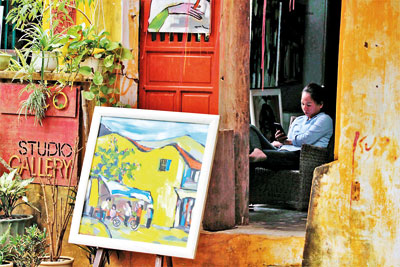
A roadside art gallery

People opt to cycle around the narrow streets. Pix by Nirmalie Alahakone

Makeshift flower pots on display

Leather products for sale
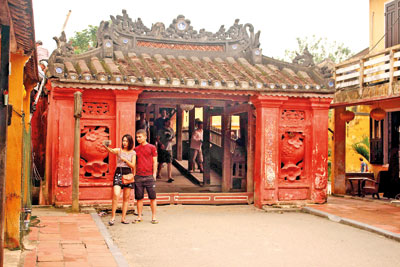
A paradise for photo shooters

A handicrafts workshop
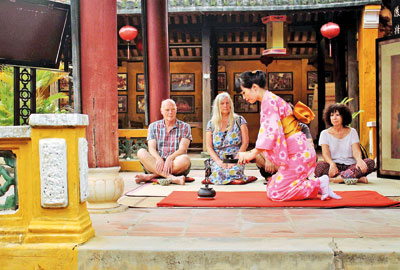
Japanese temple where old traditions are kept alive

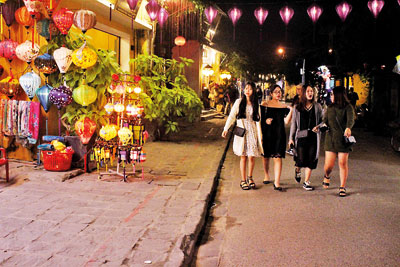
The area comes alive at dusk with the lanterns


